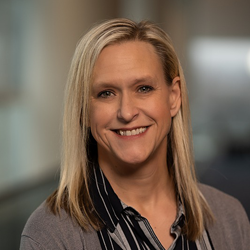|
REGISTRATION REQUIRED
VIRTUAL EVENTS

PHOTO: Impact XM
Five Tips for Virtual Events
Impact XM provides five tips to help exhibit and event pros optimize virtual events in the COVID-19 era. By John Capano
While face-to-face interaction is at the heart of live events, customers are increasingly more accustomed to virtual experiences. Some benefits of virtual events include global accessibility, reduced costs per attendee, and a digital environment that delivers rich analytics. Additionally, virtual events are easily amplified through other marketing channels such as social media. And, finally, the cloud enables unrestrained and endless creative approaches to delivering attendee and sponsor value.
With all the benefits inherent in virtual, hosting a virtual event requires the same planning and attention as an in-person event. Organizations need to keep in mind their target audiences and their overall business goals, and – most importantly – the core value proposition of attending the virtual event. While preparing to go virtual, look at all aspects of the event from audience acquisition, content, and technology to the overall attendee experience, sponsorship involvement, and analytics framework to build a riveting virtual event. To help you out, I'm providing an overview of five of the 10 best practices Impact XM discusses in our spotlight called "Getting Real About the Power of Virtual Events." To read the full spotlight, visit www.impact-xm.com. 1. Create an event home page The event home page or landing page is the gateway to your event. With the average attention span at eight seconds, it's critical that visitors can quickly and intuitively understand your core value proposition. Make the registration call-to-action clear. A well designed and engaging landing page, tied closely to your agenda, will be the No. 1 driver of registration for most events. Make sure the home page is easily viewable and functional on all devices, including desktops, laptops, and smartphones. If you are hosting a conference that attracts a wide variety of professionals, all with different reasons for attending your event, designing separate campaigns and landing pages for each persona will enable you to tailor the experience to match their specific needs and expectations. 2. Keep registration as simple as possible Design your registration process to be quick and easy. Allow social-media log-in options for the event. Limit the steps and data collection to only what you need. You will have plenty of opportunities to collect more data as the event unfolds. Once registration is complete, keep up the communication. Lack of a clear registration confirmation is a common pitfall and leaves attendees with uncertainty. And make it easy for registrants to add dates to their calendars and/or download the event app. Also, keep registrants up to date by letting them know when you add a new speaker or session topic, as well as when your event has hit registration milestones. This acts as an ongoing reinforcement of why your event will be worth attending. 3. Avoid hour-long sessions It's important to remember that virtual content is different from live content. Generally speaking, it's best to keep things shorter than they might have been in the real, face-to-face world. For example, while hour-long (or even 90-minute) sessions are common at live events and conferences, it can be hard to hold virtual attendees' attention any longer than 30 minutes. Shorter intervals (8 to 15 minutes is ideal) offer a better alternative that is better for smaller and more mobile screens. It's also a way to boost audience engagement and keep things moving. As a rule of thumb, one hour of live content should be equal to about 10 to 20 minutes of online content. 4. Make your virtual event as "live" as possible Find ways to keep your virtual events interactive, such as question-and-answer sessions and polls, discussion prompts, screen-sharing, social-media connections, virtual break outs, and hang-out/chat rooms. Just like any physical event, it is necessary to provide attendees with various ways to engage one on one, one to many, and many to many. A great starting place is a networking lounge. These lounges can offer attendees networking options such as scheduled chats on specific topics or general discussion forums. Event organizers can also allow attendees the ability to connect with each other and share virtual business cards. 5. Take advantage of virtual events' unique abilities Virtual events offer a robust opportunity to track key performance indicators and metrics that might align to your overall event goals and objectives. What are you trying to achieve? And how will you measure progress and success? These are key questions to ask early in the planning stage so that the event and experience you design closely aligns to your overall business and marketing goals. In addition, ease of data collection in virtual environments means you can adjust and optimize in real time, more so than live events. Have a popular speaker or topic? Increase promotion and bandwidth on the fly to drive more engagement. Have a piece of content that is resonating with a particular audience? Repurpose it in different formats to stretch its life cycle and usefulness. From activity/engagement metrics to attendee details and even sales data, virtual events enable you to take advantage of a data-rich environment that can help drive return on investment and business success. Virtual event attendance is growing exponentially. As technology and user expectations continue to evolve the ability to engage globally and affordably, marketers will engage in more virtual events, as well as hybrid approaches to their live events. In a recent Impact XM survey, over 62 percent of respondents said they expect to see more virtual/live hybrid events in the future. By establishing a strong strategy across your entire event and integrating some of these best practices, you'll be on your way to providing your audience an extraordinary experience. For more information on virtual events, visit www.impact-xm.com and download "Getting Real About the Power of Virtual Events."  John Capano, senior vice president, client development at Impact XM, brings two decades of experience as a strategy and marketing leader across several industries including automotive, technology, travel, and business services. With a wide range of expertise in B2B and B2C strategy, brand development, and experiential marketing, Capano's brand experience includes multiple Fortune 100 global clients. Before joining Impact XM, Capano held a variety of senior strategy and marketing positions on both the in-house and agency sides of the experiential marketing, digital media tech, and brand development industries. John Capano, senior vice president, client development at Impact XM, brings two decades of experience as a strategy and marketing leader across several industries including automotive, technology, travel, and business services. With a wide range of expertise in B2B and B2C strategy, brand development, and experiential marketing, Capano's brand experience includes multiple Fortune 100 global clients. Before joining Impact XM, Capano held a variety of senior strategy and marketing positions on both the in-house and agency sides of the experiential marketing, digital media tech, and brand development industries.
|
|
|
||||||||||||||||||||||||||||
|
|
||||||||||||||||||||||||||||
|
TOPICS Measurement & Budgeting Planning & Execution Marketing & Promotion Events & Venues Personal & Career Exhibits & Experiences International Exhibiting Resources for Rookies Research & Resources |
MAGAZINE Subscribe Today! Renew Subscription Update Address Digital Downloads Newsletters Advertise |
FIND IT Exhibit Producers Products & Services All Companies Get Listed |
EXHIBITORLIVE Sessions Exhibit Hall Exhibit at the Show Registration |
ETRAK Sessions Certification F.A.Q. Registration |
EDUCATION WEEK Overview Sessions Hotel Registration |
CERTIFICATION The Program Steps to Certification Faculty and Staff Enroll in CTSM Submit Quiz Answers My CTSM |
AWARDS Exhibit Design Awards Portable/Modular Awards Corporate Event Awards Centers of Excellence |
NEWS Associations/Press Awards Company News International New Products People Shows & Events Venues & Destinations EXHIBITOR News |
||||||||||||||||||||
|
||||||||||||||||||||||||||||






